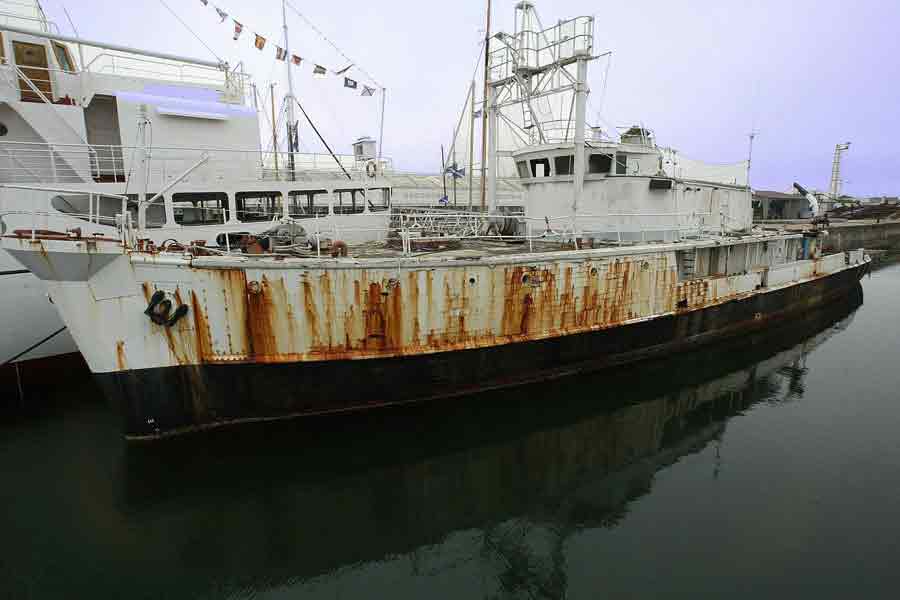
The dream began on July 19, 1950, when an enthusiastic young man named Cousteau, in collusion with a group of friends, acquired an old abandoned minesweeper that bore the mythical name Calypso.
The years that followed were as challenging as they were fruitful; the Calypso grew, changed, and adapted in proportion to the enthusiasm of its crew. Twenty years after its purchase, the old minesweeper had become the most important oceanographic vessel in the world, equipped, among other things, with two deep-diving saucers, a hot air balloon, and the most advanced technology known at the time for the study of the oceans.
The sea never had such a fierce defender. Its imposing figure appeared unexpectedly in ports where global environmental summits were held, greeted by the cheers of the population, escorted by hundreds of smaller vessels, saluted by the firing of local naval guns. Its mere presence made whale hunters and those who polluted the sea hang their heads in shame. The Calypso was present, and on its deck, behind the lens of a camera, the world population lined up.
From the Arctic to the Antarctic, from the Mediterranean to the Indian Ocean, the Calypso traversed all seas, revealing their secrets on television screens around the world. The Calypso showed us the sea, taught us to love it, to care for it, to protect it. It was the Calypso that charted the course, that taught people, ordinary people, what lived beneath the surface of the waves. It also taught us to dream of adventure. The Calypso was everyone’s home. Who among us hasn’t dreamt of gazing out at the horizon from its bow? What child hasn’t played at diving with the inimitable Falco as their companion? The Calypso was the birthplace of nearly all of us who now breathe underwater, and it inspired many marine biologists around the world.
On its deck, the most important diving records were broken, equipment that is now used worldwide was tested, and over 70 documentaries were filmed for television. Hundreds of scientific treatises were written. But most importantly, it educated, it informed, and it raised awareness about the sea more than any other medium ever did. Perhaps that’s why the world held its breath when, in 1996, after a collision with another vessel, the Calypso sank in the Port of Singapore. Cruel twist of fate, the Calypso sank in the most polluted waters on the planet.
Two weeks later, it was refloated and, wounded, was taken to the port of Marseille in France. In 1998, after Cousteau’s death, it was moved to the port of La Rochelle, where it still remains, abandoned, dirty, rotting under the sun. Forgotten by a world more addicted to mirrors than binoculars, the Calypso dies a little each day without anyone remembering it. It is not a world heritage site, nor is it the centerpiece of a museum. It doesn’t even have the honor of being a shipwreck in the Coral Sea. It is just a discarded remnant in a port, a corpse drying in the sun, invaded by rats and filth.
The Calypso has always been a symbol, and perhaps it still is. Perhaps it is a symbol of what we have become. A few days ago, the International Whaling Commission met in a Caribbean port. Through corrupt means, the Japanese have gained the majority of votes, and the world is on the verge of reopening whale hunting.
No ship appeared unexpectedly in the port, escorted by people who love the sea. The Calypso did not arrive; the
Calypso no longer sails. Whales are at the mercy of killers, and the sea no longer has anyone to defend it.
«You cannot defend what you do not love, and you cannot love what you do not know.»

